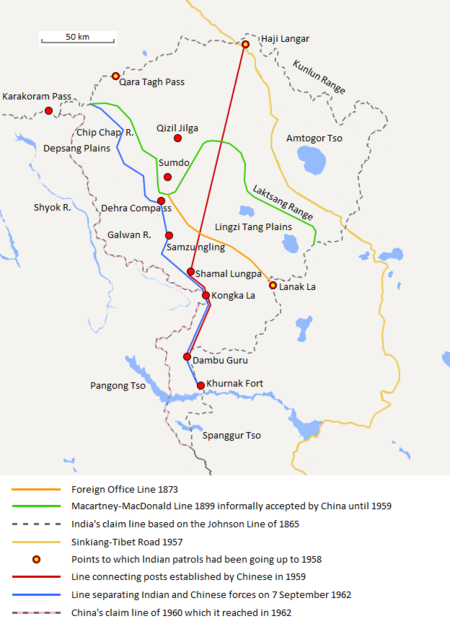
Tensions between India and China escalated following fatal skirmishes on June 15, 2020, in the contested border zone. The clashes between Indian and Chinese troops broke out in the contested Galwan Valley in the disputed Kashmir region, where at least 20 Indian soldiers were killed. So, why did the dispute between the two Asian giants escalated so far? What are the causes of the conflict?
Whatch the Video !
Dispute Over Territory Borders
Tensions between the two nuclear-armed neighbors have been rising due to disputes over their 3,500-kilometer frontier, which has never been properly demarcated. Disputes mainly concern the Aksai Chin area, which is located in the Himalayan border, a zone poorly demarcated. India claims that region to be part of Ladakh, while China claims it to be part of Chinese Xinjiang region.
Who controls the Galwan Valley
While remaining a disputed zone, the Aksai Chin, including the Galwan Valley, has been administered by China since the conclusion of the Sino-Indian military standoff of 1962. India does not recognize the area to be part of China, and is thus contesting the control of China over the area. Yet, the two countries had agreed to a resolution of the border dispute in 2005. But since then, no further progress has been achieved on the demarcation of the Line of Actual Control (LAC).
What the Line of Actual Control stands for?
The Line of Actual Control (LAC) is the de-facto border between India and China. It was formed following the 1962 Sino–Indian War, to separate Chinese-controlled territory from Indian-controlled territory. In fact, the two Asian superpowers got into a brief war in 1962 over the disputed region. Latest tensions between India and China escalated in May in this very Ladakh region, which borders Tibet. So, despite the establishment of the Line of Actual Control, tension has remained in disputed Indian-Chinese territories.
Why is the Galwan Valley so important?
The Galwan Valley is located in a point considered to be of great strategic importance by the two neighboring countries. While largely uninhabited due to freezing temperatures, it remains a strategic location. The Galwan River is named after Ghulam Rasool Galwan, a Ladakhi explorer of Kashmiri descent. The Indian government’s recent construction of infrastructure in the region has irked the Chinese, and is considered as a point of contention between the two armies.
China’s foreign ministry spokesman, Zhao Lijian, blamed Indian troops of starting the clashes by crossing the border line twice on June 15, “provoking and attacking Chinese personnel, resulting in serious physical confrontation between border forces on the two sides”.
Why no guns were used ?
Clashes between the two sides on June 15, did not involve the use of firearms, instead it was skirmishes undertaken reportedly with the use of rocks and batons. So why?
Because, the use of firearms during face-offs is prohibited by a bilateral agreement signed by the two countries.
Under the agreement of the long-standing practice (as per 1996 & 2005 agreements), “neither side shall open fire… conduct blast operations or hunt with guns or explosives within two kilometers of the Line of Actual Control”.
Talks to resolve tensions
In a move to resolve tensions, the two governments have agreed to hold talks and continue the military and diplomatic engagements to settle the situation and ensure peace and tranquility in the border areas”.

Leave a Reply